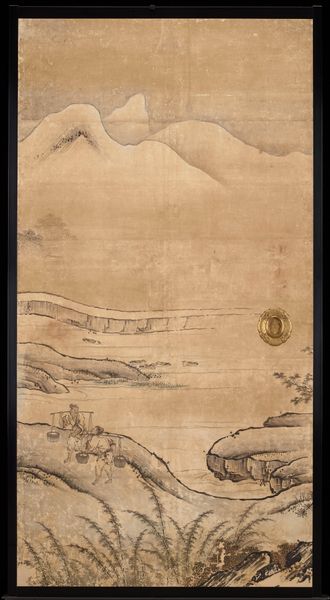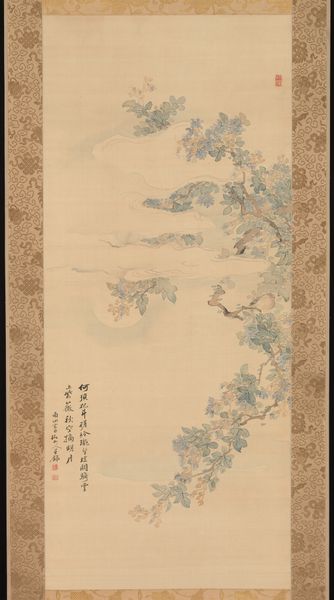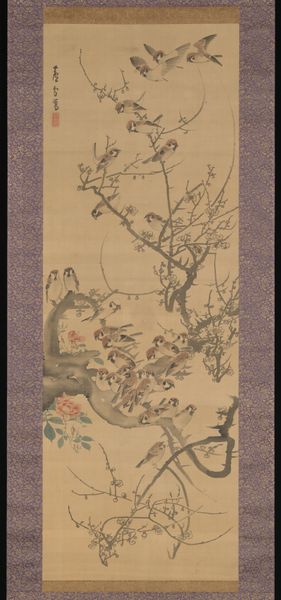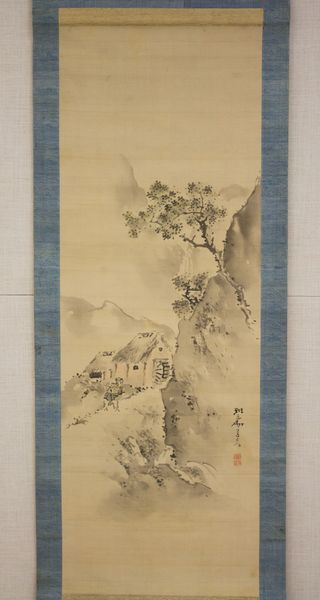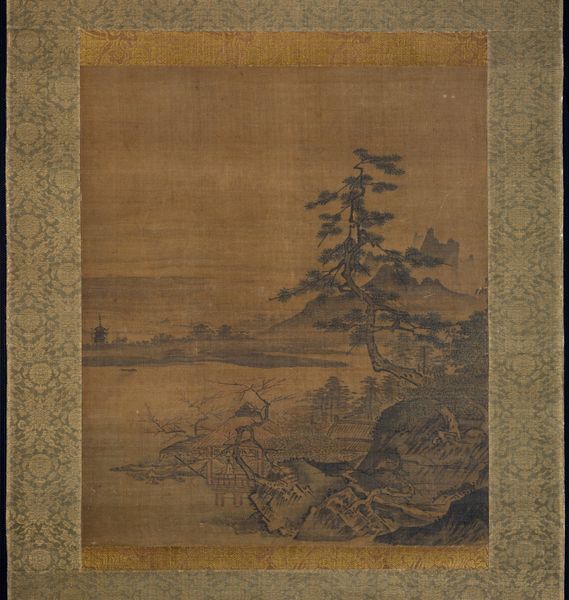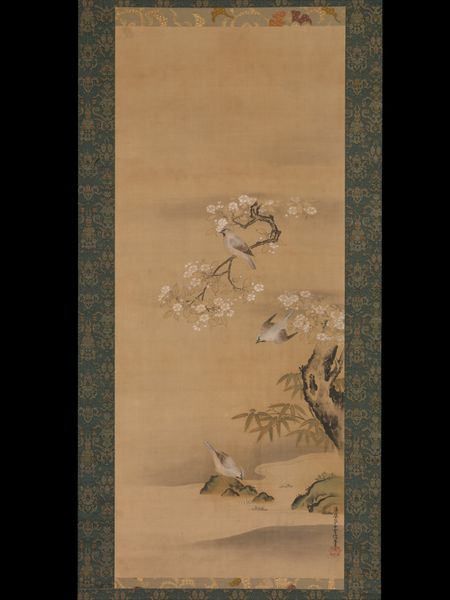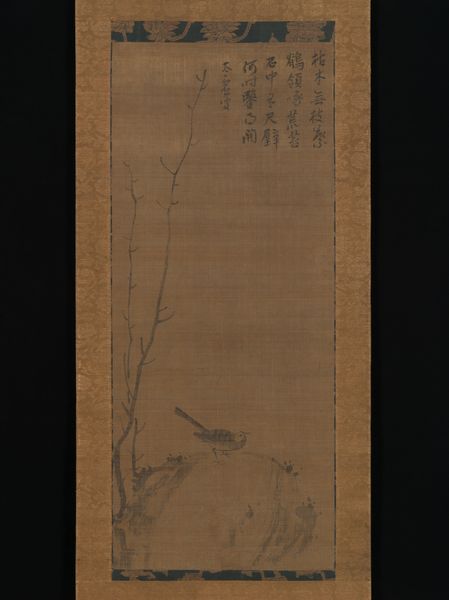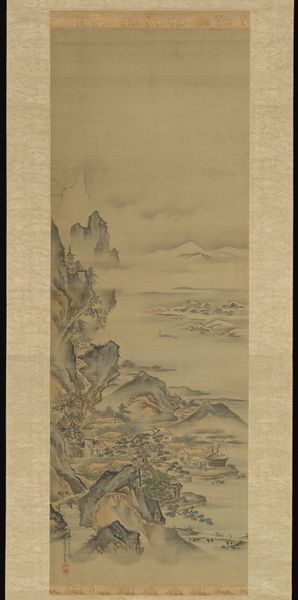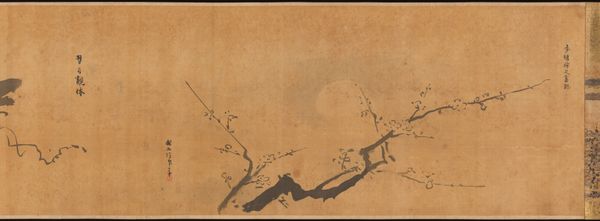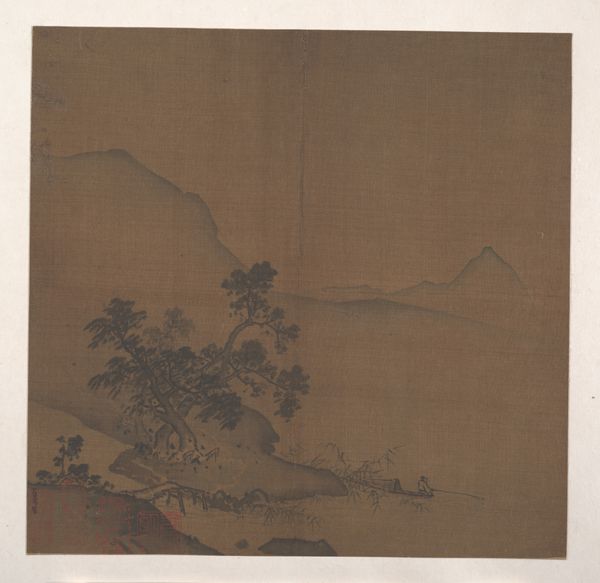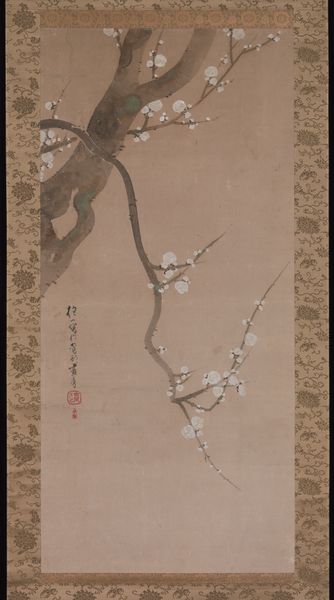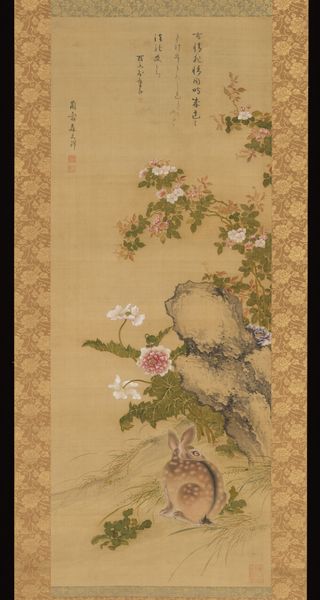
Enjoying the Sun Beneath Pine Trees 13th-14th century
0:00
0:00
painting, hanging-scroll, ink
#
medieval
#
painting
#
asian-art
#
landscape
#
figuration
#
hanging-scroll
#
ink
#
china
#
line
Dimensions: 42 5/16 x 21 9/16 in. (107.47 x 54.77 cm) (image)77 1/8 x 28 in. (195.9 x 71.12 cm) (overall, without roller)
Copyright: Public Domain
Curator: The painting before us, currently held at the Minneapolis Institute of Art, is attributed to Ma Yuan and titled "Enjoying the Sun Beneath Pine Trees." It dates from the 13th to 14th century. Editor: Immediately striking. It evokes a quiet sense of scale, and calm melancholy. The delicate ink washes create atmosphere, making me want to wander into that distant mist. Curator: Note the careful brushwork; the subtle gradations of ink give depth and form to the landscape. As a hanging scroll, consider its role in a domestic or perhaps scholarly setting. The materials—silk, ink, and the techniques used to mount the work itself—speak volumes about its production and value. Who would have had the resources to commission this? Editor: Indeed. The political implications of such artistry are always worth noting. How would the literati have perceived the figures depicted, or the symbolic representation of nature in the courts of the time? Was this scene referencing something more broadly about the ruling elite? Curator: That brings up interesting considerations regarding patronage, doesn’t it? Consider the division of labor that went into such works— from the preparation of materials to the physical act of painting. Someone cultivated the silk; another prepared the inks; someone mounted it as we see it here today. How was the art market evolving during this time to foster such art objects? Editor: The placement of such imagery, the act of display, shaped perception. Did owning this scroll provide the possessor access to certain cultural and social stratas, what was the role of gifting within those spaces? Also, I see small figures – scholar types presumably – taking refuge and solace in nature. Is it idealized escapism or reflecting some type of resistance to politics? Curator: Fascinating questions to consider given our remove. When engaging with the historical, cultural, and material dimensions of "Enjoying the Sun Beneath Pine Trees", it highlights the social factors and economic system which shapes how such objects enter into cultural heritage in the first place. Editor: Absolutely, a lens on history and its forces frames what, how, and why such treasures get preserved in a collection for everyone to view today. It has been illuminating discussing such art from dual perspectives.
Comments
minneapolisinstituteofart almost 2 years ago
⋮
Ma Lin, named in the red seal, was the son of the great academy artist Ma Yuan. Characterized by firm, expert brushwork, the composition and stylistic features of this painting place it clearly within the classical tradition of court painting that flourished in Hangzhou from the 1100s to the early 1400s. The Daoist theme of a lone scholar viewing the sunrise is standard Southern Song subject matter. He reclines on a riverbank with bronze ritual implements arranged in front of him, probably in preparation for ritual incense burning. The Daoist philosophy, with its emphasis on nature, was fundamental to the early development of landscape painting and nature poetry in China.
Join the conversation
Join millions of artists and users on Artera today and experience the ultimate creative platform.
